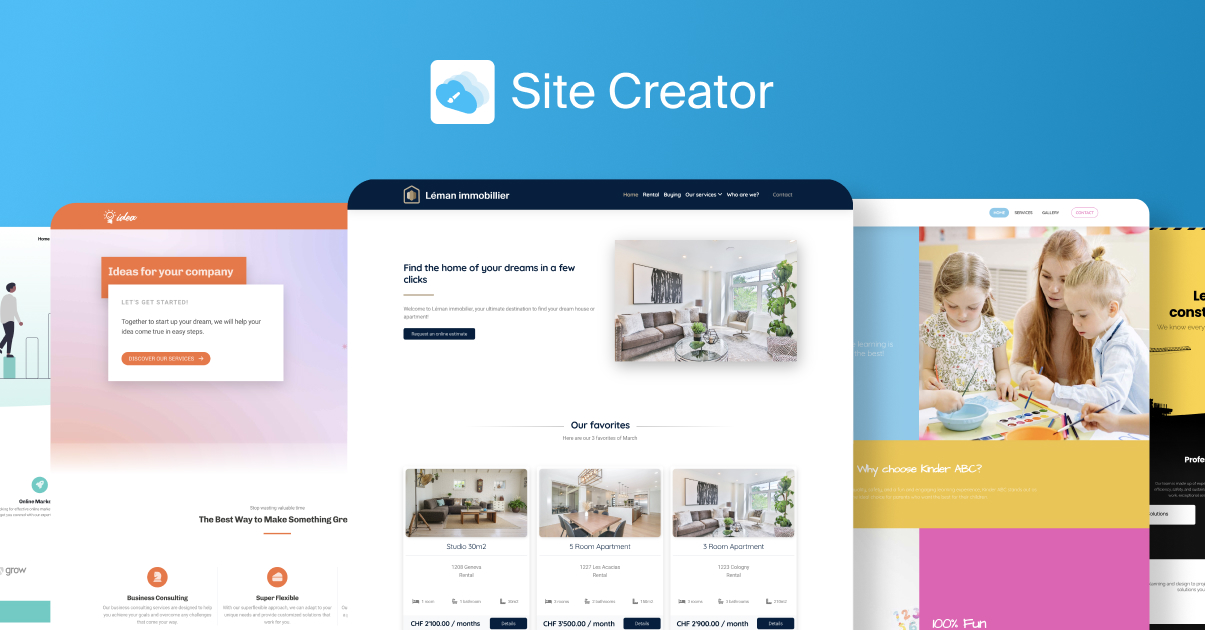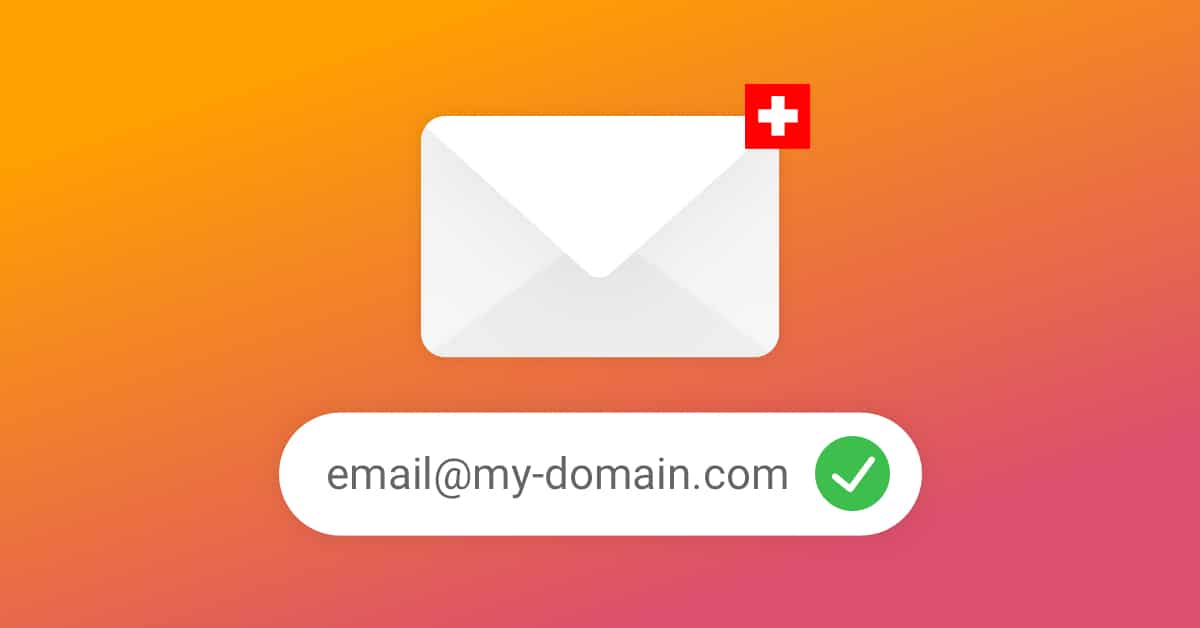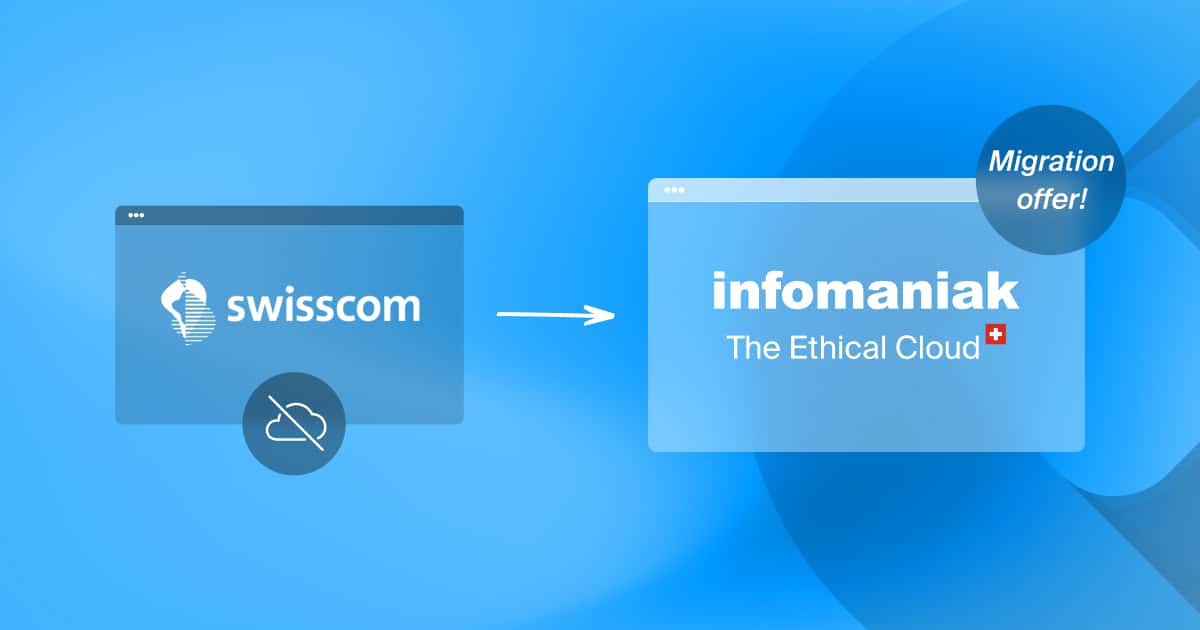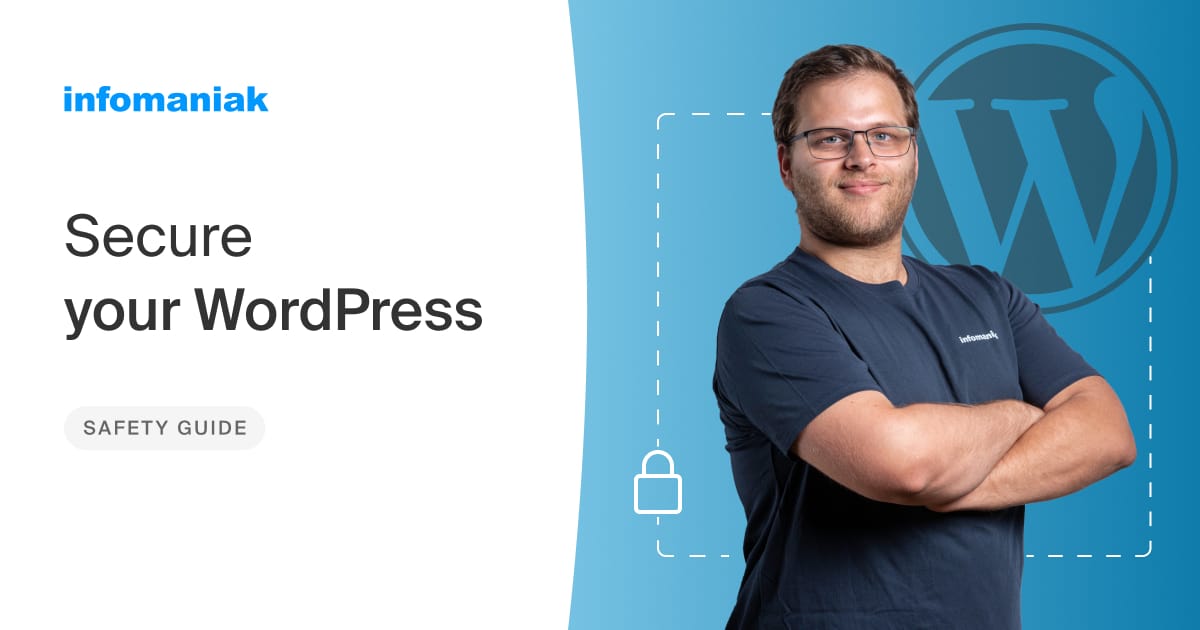Imagine: your website is inaccessible, your emails no longer work, your search engine referencing has disappeared. Our support team is regularly confronted with a misunderstanding of the rules surrounding the ownership of domain names. Ignoring these rules can lead to the paralysis of your business and turn into a disaster. Without your domain, your communication becomes obsolete (logo, flyers, marketing materials, social networks, directories, etc.). However, these situations are easy to avoid if you are well informed. In this article, you will learn how to keep control of your domain and your online presence.
Registering a domain name is so easy that you don’t suspect the serious issues surrounding it. Blocking, legal proceedings, blackmail: this contrast sometimes creates problematic situations.
Johann Laqua, DPO at Infomaniak
1. The danger of wanting to remain anonymous behind your domain name
The story is a common one: a customer wanted to buy a domain name anonymously. They provided bogus contact details to register their domain and for their Infomaniak account. Later, the person contacts support urgently as their website is no longer displayed and their emails are no longer working. They wonder if they’re a victim of hacking and discover that their domain has been automatically blocked.
Domains must be linked to their owners
To ensure that everything works, all domain names are supervised by a global authority (ICANN). This system ensures that no one can take ownership of someone else’s domain and that the owner is contacted in the event of a problem in order to comply with the laws of each country.
Johann Laqua, DPO at Infomaniak
Administratively speaking, each domain is registered and managed by a registrar, such as Infomaniak. What is less well known is that domain extensions (.ch, .fr, .com, .shop, etc.) are managed by registries such as Verisign, Afnic, SWITCH, etc., which are located above the registrars.
Registrars have a legal obligation to check whether the contact details provided in the WHOIS allows a domain to be linked to its owner. If this information is incorrect, the registries may turn against the registration offices (registrars such as Infomaniak) with an official request like this:
At this stage, the domain name is blocked by the registry (above Infomaniak), which has negative consequences:
- the site is inaccessible
- emails no longer work
The registry requires Infomaniak to provide supporting documents to establish the identity of the domain owner and the exact contact details enabling them to be reached. The deadlines vary depending on the extension (.fr, .ch, .com, .be, .it, .co.uk, etc.), but in principle the procedure remains the same.
And if the contact details of the “anonymous customer” are not entered, they will permanently lose their domain name:
If false contact details have been provided, the registration office (Infomaniak) cannot contact the owner to ask for proof of identity and the required contact information. The domain cannot be regularised and will be deleted by the extension registry. There is no turning back.
Johann Laqua, DPO at Infomaniak
Here’s how to hide your identity without risking losing your domain
With the introduction of the GDPR, registries with customers in Europe are no longer required to publish the contact details of a domain in the WHOIS. To protect your personal information at any event, we give you the legal means to be as discreet as possible without risking losing your domain:
- Enter valid contact details in your Infomaniak account. These are only used to authenticate your identity with the registries.
- Check that the contact details on the domain contact form are correct. It proves that you are the lawful owner.
- To anonymise your contact details as far as possible, activate the Domain Privacy option. The information entered in the WHOIS will be replaced by a trusted intermediary, Domain Privacy Trustee SA (Infomaniak). Thanks to this option, your contact details are not publicly visible and the registry of your domain extension will still be able to authenticate your identity.
Source: whois.com
2. Hijacking of your domain by a third party
This happens regularly: a customer uses an IT service provider to manage their domain and website. When registering the domain name, the WHOIS information is entered with the contact details of the service provider. Result: the domain legally belongs to the IT service provider, not the customer. In the event of a dispute, customers are held hostage and risk losing their domain if their provider forgets to pay their invoice.
Here’s how to avoid disputes over the ownership of a domain
For registries, the determining factor for the rightful owner of a domain is the domain contact card. Even if your domain is managed in your Infomaniak account, if it was paid with a credit card in your name or if you have an invoice in your name from your IT service provider, the only thing that is authentic is the domain name contact card. However, there are legal protections: you can assert prior rights, for example if your company has been in existence for years, if your trademark has been registered, etc. These arguments can be presented in a court of law. In the event of a dispute with a service provider or partner, the consequences for your business and its image can be disastrous if you are unable to regain full ownership of your domain name.
To avoid this risk, check that the ownership card of your domains is in your name.
If not, there are two options:
- BEFORE a potential conflict: change the owner of the domain. Both the old and new owners will need to validate the application.
- In the event of a dispute: negotiate amicably. The consequences of legal action are often time-consuming, costly and energy-consuming.
If negotiations drag on, choose another very similar domain name. This will allow you to continue your business instead of being shut down altogether. You will still be able to redirect your new domain to the old one if you retrieve it.
Bertrand P., Infomaniak Support
3. A trademark claims your domain by invoking intellectual property
The purchase of a domain must not infringe on the intellectual property of, for example, a well-known trademark or personality. If you purchase the domain of a pre-existing company or trademark, the latter may legitimately assert prior rights. Even if you manage to register it, a trademark may have your domain name suspended if there is a risk of confusing the activities. This is deemed to be cybersquatting. Conversely, a domain name that is registered and used already constitutes a form of protection.
If you register an existing trademark domain, you are exposed to two risks:
- Legal procedure and administrative costs in the event of disputes
- The need to redesign your brand, update your marketing and communication materials, etc.
Here’s how to check the availability of a trademark for your domain
Is there a possible conflict between a trademark and your domain? Even if your name is not exactly the same, your domain can be attacked.
For example:
- www.magasin-nike-lausanne.ch
- www.instagroom.photography
These two domain examples will not last long before being deleted.
To avoid this risk, compare your domain name idea with existing trademarks at the time of registration. These sites will help you check if your domain is likely to conflict with an existing trademark:
- Swissreg, database of trademarks in Switzerland
- Information on companies in Switzerland
- Swiss Commercial Register Index
- Information on companies in France
- Wipo, International Trademark Database
4. Having your domain “stolen” due to a late payment
Forgot to renew your domain? Google has already paid the price for this. Speculators take advantage of this opportunity to buy it back the minute it is available again.
This happens every day: a customer returning from holiday notices that their domain is no longer accessible. They call us urgently and tell us that they made sure to activate the automatic renewal. Although they thought they had everything planned, their domain is deactivated and they risk losing it. They didn’t see the reminder emails in their spam folder and their credit card was blocked on holiday. Result: the automatic renewal was not activated and their domain can be registered by someone else.
What happens when a domain name is not renewed
Source: icann.org
A domain has at least 5 possible states:
- The active period: your domain is yours, everything is fine.
- The grace period: the domain has expired, but it still works. During this period, it is possible to renew it at a lower price than in the redemption period.
- The redemption period: the domain has expired and it is possible to recover it at an additional cost.
- The deletion period: the domain has expired and cannot be recovered.
- The availability period: the domain is deleted and available. It can be registered by anyone.
If you forget to renew your domain and lose it, your competitors are free to register it.
Here’s how to avoid renewal issues
At Infomaniak, simply activate the Renewal Warranty option to guarantee the renewal of your domains, whatever happens! Even in the event of a prolonged absence or if your payment method does not work, Renewal Warranty is activated and pays for the renewal of your domains on your behalf, giving you much more time to rectify the situation.
5. Summary: best practices to avoid problems with your domains
Take a few minutes to check up on your domains!
- Check the owner of your domains and the validity of the information. It must be in the name of its real owner.
- Check the validity of the information in your Infomaniak account (first name, last name, address).
- Activate Domain Privacy to avoid sharing your personal information in the WHOIS if you are unsure about the registry that manages your domain extension.
- Activate Renewal Warranty to guarantee the renewal of your domains in the event of a problem with your payment method.

 Français
Français Deutsch
Deutsch Italiano
Italiano Español
Español








You must be logged in to post a comment.